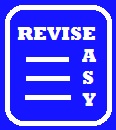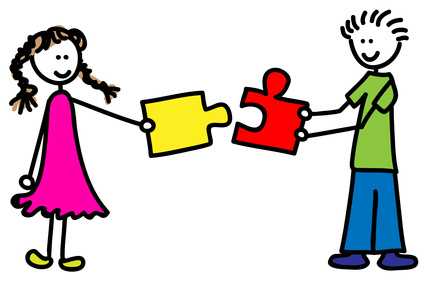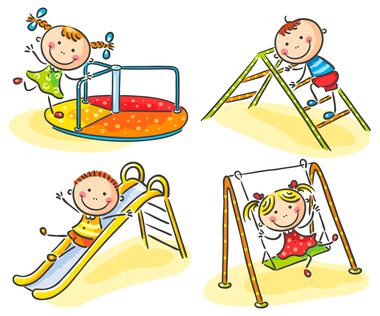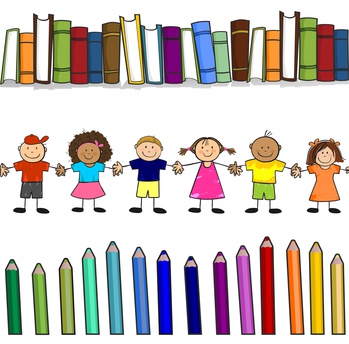Bruner's learning theories
Jerome Bruner (1915-2006) believed that children learn through different ways of thinking and that learning corresponds to their level of cognitive ability. The way they make sense of their experiences and how they interpret the world occurs through three different modes of learning. Any information gained is stored in the memory and recalled when needed.At the beginning children's thinking is based on concrete objects and activities, later knowledge is embeded using images and finally learning occurs from abstract thinking.
See the table below illustrating the 3 modes of learning proposed by Bruner.
| Description | Examples | |
|---|---|---|
| Enactive Age 0 - 1 |
Learning through physical movement. Representation of knowledge through action. |
Shaking a rattle, crawling, turning head when hearing a noise, grasping a finger or toy. |
| Iconic Age 1 - 7 |
Learning through senses. Here children can now learn by holding mental pictures of their experience
and are able to stores this information in their mind. Children need concrete objects, activites and experiences so they can absorb the information. |
Soft toy such as a teddy bear, Sound of a rattle, drawing a shape or a flower. Smell of pop corn or taste of chocolates. Playing in a room, but thinking about the ball or flowers in the garden. |
| Symbolic Age 7 + |
Abstract thinking develops. Information stored in the mind using symbols such as language, music, numbers or using words to describe experiences. |
Adding or subtracting numbers, understand meaning of abstract words such as happiness or sadness. Can problem solve. Use Imagination and has ability to be creative. |
Scaffolding
According to Bruner children regardless of their age are capable offurther development if supported and guided by people who are knowledgeableor experienced. Bruner proposed the concept of 'scaffolding' which refers to adults supporting children to learn concepts and skills during play, activities and daily life. At the begining adults including practitioners, teachers, parents, friends and siblings can provide step-by-step support and then as the child grows and becomes confident, the adult can gradually remove their support, hence allowing the child to play and work by themselves.
Examples of activities where adult support can be provided: cutting and pasting activities, threading beads, playing board games like draughts/chess, assembling parts to a toy, skating, riding a bicycle, telling the time or learning to add and subtract, button up coat or tie shoe lace.
Linking theory to EYFS
- Early year practitioners can encourage children to play or engage in the activities by giving them some guidance and praising them in their efforts and achievements.- Early year practitioners can talking, encourage and help children or being by their side when they are learning a new skill. For example: riding a bike, doing a puzzle, threading beads, or playing football or passing the ball.
*Allocating Key person:
- Childcare setting can allocate a key person to each child to support child in the nursery.Key person role to understand and accommodate a child's needs in the nursery
- Children regardless of their age are capable offurther development if supported and guided people who are knowledgeable or experienced.
- Practitioners can ensure that activities that have elements of adult-led and child-initiated play.
- Practitioner can support children to reach their potential by showing or demonstrating how something is done, and then allowing them to do it by themselves.
- Practitioners can give tips and show some techniques on how something is done.
*Every child is unique:
Babies and children develop in individual ways and at varying rates.
- Practitioner can be mindful of the children's uniqueness when carrying out an observation to assess children's progress or abilities.
- Practitioner can take into consideration children's uniqueness when planning and designing structured activities.
*Learning & development:
- Practitioners can set challenging tasks to stretch children's thinking.
Social interaction
Through social interaction adults can help children develop language. Bruner saw language as a learning tool for thinking and important element of play. For example, by encouraging children to sing along nursery rhymes (Wheels on the buses), they will learn new vobulary; at the same time showing children to enact the nursery rhymes. Playing games like Peek-a-boo, will help children develop language.Linking theory to EYFS
- Early years practitioners can assist children during activities to promotedevelopment.
- In early years setting practitioners can play simple board games like ludo or snakes and ladders designed for younger children.
- In schools teachers can set up group activities aimed at problem solving.
They can interact with the children to encourage them to engage in the
activities and nurture their thinking.
*Forming positive:relationship with the children:
- Having a key person in the nursery to support child and encourage learning.
- In the early year setting, key person (practitioner) can build a warm trusting relationship with a child by making them feel safe, secure and meeting the child's individual needs. The trust is the catalyst for positive interaction that will facilitate child's learning and development.
*Play and exploration:
Playing with other children or their peers is important for children's development.
Language theory
Like Vygotsky, Bruner also believed children made sense of the world through language. Language as an essential tool for communication
that allows children to interact with others
in society.
To promote developmentof language:
- Use puppets, sing songs, and nursey rhymes etc.
- Set up activities that encourage speech and learn new vocabulary: for example,
'naming object activity'
- Read stories that grab children's attention and encourage children to ask questions.
- Use puppets, sing songs, and nursery rhymes etc.
- Set up activities that encourage speech and learn new vocabulary: for example 'naming object activity'
- Read stories that grab children's attention and encourage children to ask questions.
- Set up activities that encourage speech and learn new vocabulary: for example 'naming object activity'
- Use puppets, sing songs, and nursery rhymes etc.
- Set up activities that encourage speech and learn new vocabulary: for example 'naming object activity'
- Read stories that grab children's attention and encourage children to ask questions.
Linking theory to EYFS
*Learning and development:Prime area: communication and language:
- Set task that promote language development and enable children to communicate.
- Talk to children when they are engaged in a task, make suggestions or ask questions.
Secondary area of learning: maths and literacy:
- Encourage children to play board games where they are learning to count.
- Sing nursery rhymes from which they learn new words.
- Encourage children to write their names on paper and drawings that they have done.
Prime area: communication and language:
- Set task that promote language development and enable children to communicate.
- Talk to children when they are engaged in a task, make suggestions or ask questions.
Secondary area of learning: maths and literacy:
- Encourage children to play board games where they are learning to count.
- Sing nursery rhymes from which they learn new words.
- Encourage children to write their names on paper and drawings that they have done.
Linking theory to practice
In your setting, find out how practitioners support
children with language development.
REFERENCES
Silver, D (2011) Using the Zone Help Reach Every Learner. Kappa Delta Pi Record 47(sup1) , 28-31Tassoni et al (2007) Level 3 Childcare and Education.Heinemann: England
Tassoni et al (2010) Level 3 Certificate for the Children and Young People's Workforce. Pearson: Harlow Essex
Vygotsky L (1978) Interaction between learning and development . Reading on the development of children 23(3) 34-41






